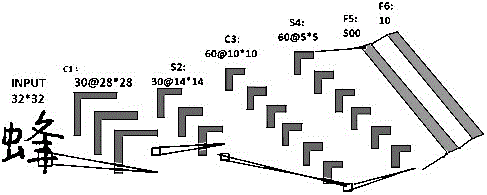Off-line handwritten Chinese character recognition method carrying out data expansion based on deformation method
A technology of data expansion and Chinese character recognition, which is applied in character and pattern recognition, neural learning methods, computer components, etc., can solve problems such as complex, strong, and inapplicable methods, and achieve high classification performance and improved robustness sexual effect
- Summary
- Abstract
- Description
- Claims
- Application Information
AI Technical Summary
Problems solved by technology
Method used
Image
Examples
Embodiment Construction
[0025] The specific implementation of the present invention will be further described below in conjunction with accompanying drawing and example, but the implementation and protection of the present invention are not limited to this, it should be pointed out that if there are no special details below, those skilled in the art can refer to existing technology achieved.
[0026] The convolutional neural network consists of an input layer, a hidden layer, and an output layer, and the hidden layer mainly includes a convolutional layer, a maximization pooling sampling layer, and a fully connected layer.
[0027] (1) Convolutional layer. The convolutional layer is used to extract basic visual features in the visual receptive field, also known as a feature map, and the operation unit is also called a neuron.
[0028] (2) Maximum sampling layer. Because images have a "static" property, it means that features that are useful in one image region are likely to be equally applicable in ...
PUM
 Login to View More
Login to View More Abstract
Description
Claims
Application Information
 Login to View More
Login to View More - R&D
- Intellectual Property
- Life Sciences
- Materials
- Tech Scout
- Unparalleled Data Quality
- Higher Quality Content
- 60% Fewer Hallucinations
Browse by: Latest US Patents, China's latest patents, Technical Efficacy Thesaurus, Application Domain, Technology Topic, Popular Technical Reports.
© 2025 PatSnap. All rights reserved.Legal|Privacy policy|Modern Slavery Act Transparency Statement|Sitemap|About US| Contact US: help@patsnap.com



